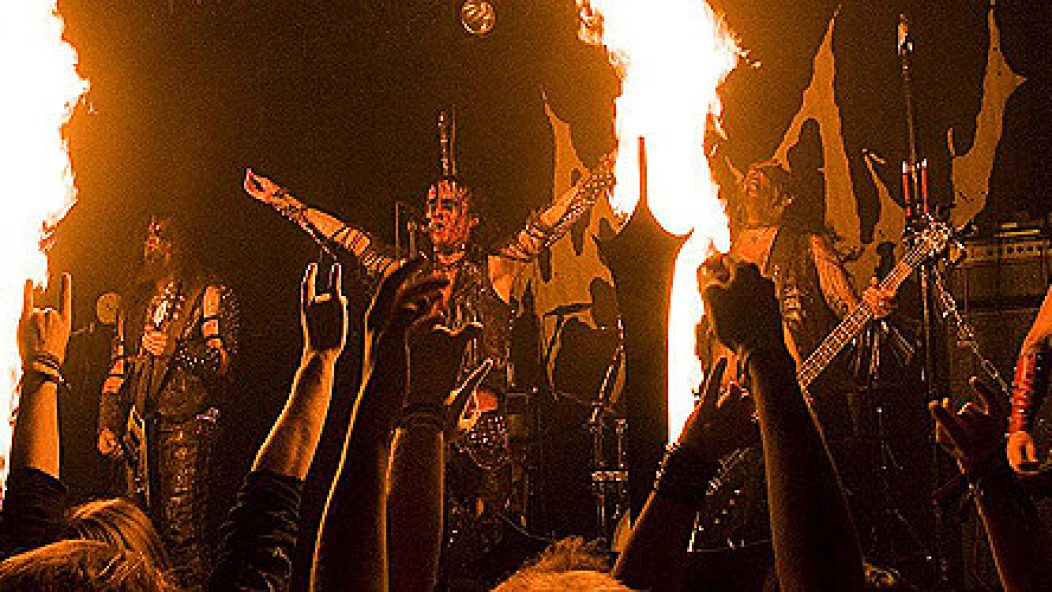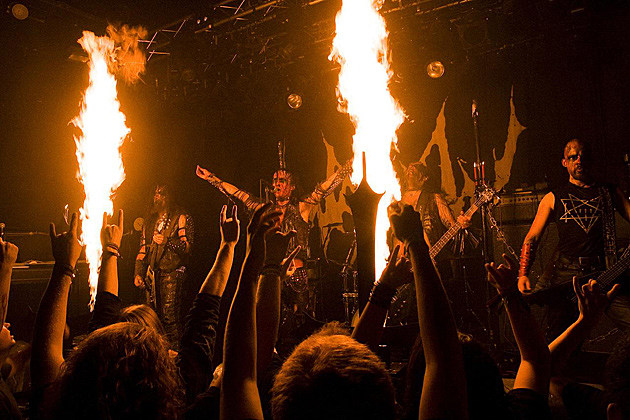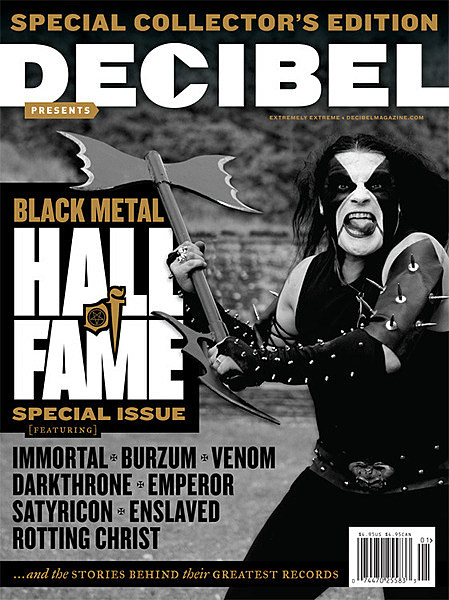
Whither black metal?

. . .
Is it just me, or has it been a terrible year for black metal? I look back at this year’s posts tagged “black metal”, and they are numerous, but they delineate small triumphs. The year’s biggest black metal record, Watain’s Lawless Darkness, came with much fanfare and fell with a whimper, at least to my ears. Oddly, my favorite black metal record this year will likely be 1349’s Demonoir – and I consider it more interesting than good. Listeners seem to have ignored it, with last year’s Revelations of the Black Flame disaster fresh in their minds. These are the giants of the field, and their footing is unsure.
To be sure, black metal-influenced metal has never been stronger. The Profound Lore roster (Ludicra, Agalloch, Krallice, Castevet, The Howling Wind, Cobalt) is proof. Musicians are taking black metal’s sound and running far with it. Black metal is coloring every other kind of metal – thrash, death, sludge, doom. Even hardcore punk and indie rock are getting “blackened”. But for the real stuff, the state of the art seems more bleak than black.
This begs the question of what “real black metal” is. I don’t think of it in formal terms. Some say that black metal requires Satanism, but that definition is too narrow. It knocks out Burzum, Absu, Immortal, Xasthur, and other possessors of the dark energy that I associate with black metal. To me, black metal is a “know it when you hear it” proposition. It is a feeling. That feeling is deep and dark, and it comes from the total package: sounds, visuals, lyrics, attitude. Just having tremolo picking, blastbeats, and corpsepaint isn’t enough.
The “real stuff” seems to be in short supply now, despite an overwhelming glut of releases marketed as “black metal”. Perhaps this is due simply to the ravages of time. This happens to most popular music: an initial explosion of creativity, a fertile first few years, then dilution and decline over time. I recently read two eloquent commentaries (here and here) on the film Until the Light Takes Us, which recently came out on DVD. Among other things, both lamented the fact that things just aren’t the same now. The world has co-opted black metal for its own ends. True practitioners still exist, but they remain obscure – perhaps willfully so – in a sea of pretenders.
. . .
. . .
This sense of loss resonated with me when I read Decibel‘s recent Black Metal “Hall of Fame” issue. (Order it here.) It has in-depth features on classic albums by Immortal, Burzum, Venom, Darkthrone, Emperor, Satyricon, Enslaved, and Rotting Christ. Despite my misgivings about its silly Immortal cover, it turned out to be essential and enlightening. Much – perhaps too much – has been made of the church burnings and killings in black metal’s early days. Those antics never interested me. The actual music, its messages, and the (non-criminal) people behind them have always interested me more. So this Hall of Fame issue fills in historical gaps that the tabloid press has left. Taken as a whole, it paints a more complete picture of what went on in the early ’90s.
To an extent, my own personal development colors my perception of black metal today. I am not a misanthropic loner, so that kind of energy that emanates from so much black metal does not resonate with me. Also, my atheism has become more defined, so that I find Satanism as false as the construct that spawned it, Christianity. This came to a head in my interview with Erik Danielsson of Watain. He is intensely spiritual, so I asked him about atheism. For me, his dismissal of the position reinforced the importance of not supporting Satanism. I am not in the business of supporting false things. The enemy of my enemy is not necessarily my friend. (See, e.g., the US Democratic Party.) So I am much more circumspect now about my support of black metal.
But the real stuff still holds great power. The Decibel issue spurred me to revisit those classics, and I found them just as magical as when I first discovered them. In particular, Darkthrone’s Transilvanian Hunger astounded me with its purity and strength of feeling. It had been a while since I heard it, due to being turned off by countless Darkthrone clones. But the real thing remains undiminished. It still gives pause to atheist me. Maybe there are mystical forces out there. Maybe humans can tap into them. That “maybe” is part of black metal’s magic. Too bad it’s virtually impossible to find now.
. . .












